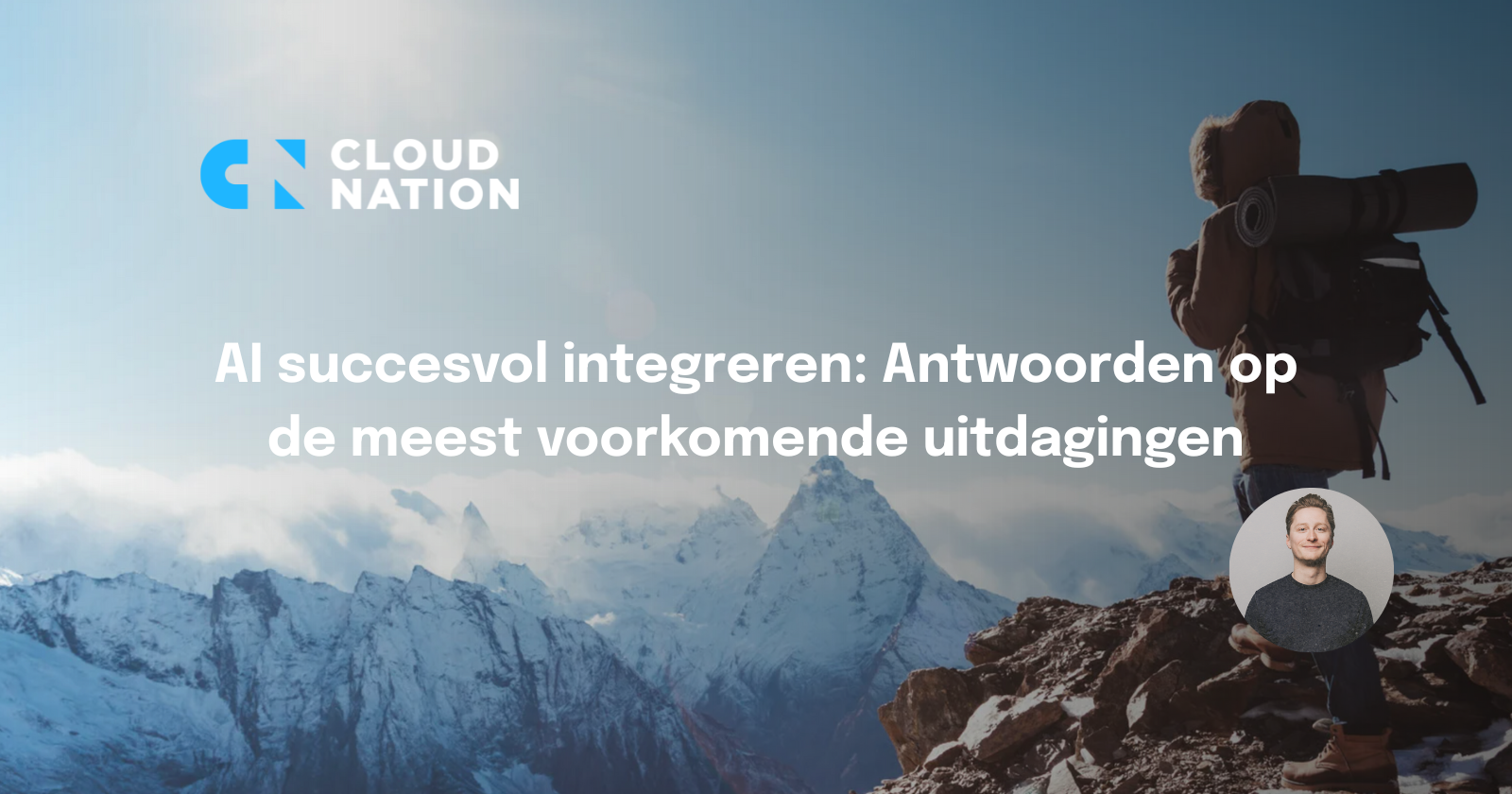You probably have heard about “the cloud”. Endless computer resources that are located somewhere in the world and easily accessible from any location with an internet connection. A big step in the flexibility and availability of IT infrastructure. By providing different types of services, cloud providers allow you to tailor and scale your infrastructure exact to the dynamic needs. But it takes a few steps to be in “the cloud” and reap its benefits. One of these steps is a cloud migration, the process of moving to cloud infrastructure. For most companies this is an innovative step which requires an explorative attitude. On the other hand, you aim for a seamless and well-planned transition, which prompts the question: How can you ensure a structured migration project while also fostering flexibility and innovation?
How to approach a structured migration project
Well, Successful project management, you might think at first. And although there is a key element in that, it requires a mix and match of some approaches and steps to reach the ultimate result. For example; the agility of the scrum/agile framework could come in handy when new discoveries arise, whereas the gantt chart adopted from prince2 allows you to never lose track of that deadline for migration. Additionally, you barely do a cloud migration alone as most of the time there are multiple suppliers and customers involved. Everyone with their own share of the IT landscape that requires additional cooperation and dependency management. Within CloudNation we make use of the 6D phasing model. Although these phases can also exist on their own, there is some benefits to follow them sequentially and we’ve become an expert in how to apply them to a migration. But before we dive into that, we need a short stop on possibly the most influential factor of project success: People
People at the center
People can make or break any IT project and are the crucial factor to determine success. Although there is a fair share of automation going on in migrations, for example infrastructure as code and the autoscaling of resources, there still is a lot of governance, communication, and expertise necessary to establish an efficient and working solution. This becomes especially challenging when, as mentioned earlier, multiple parties are involved which are often globally located suppliers, colleagues, customers and IT-vendors. All of these with their own way of working, culture and approaches. Bringing them all together is ‘people’s work’ and one of the reasons why CloudNation relies and invests heavily on the competenties of their consultants; the combination of technical skills and interpersonal communication. To be able to effectively use these competencies in a structured manner, in which everyone involved has clear expectations, we developed the 6D model.
The 6Ds
CloudNation makes use of a six-step model to ensure grip and a logical flow in the cloud approach. Although it’s not mandatory to follow every step sequential, together they form a journey from A-Z, starting from the first view on current IT infrastructure to the successful implemented, optimized and maintained cloud environment.
Discover
The Discover phase aims to have a broad understanding of the current infrastructure. The essence of a cloud migration is moving from ‘old’ to ‘new’, but you might want to have a good look at how the ‘old’ is configured. That’s where the Discover phase comes in. Possibly one of the easier phases as there is no to-be situation to be considered yet. By interviews, best practices and documentation, we analyze what’s already there that provides us with valuable information on how to proceed. A few weeks down the road and we have a great understanding of the cloud readiness of your environment or, perhaps checked the health situation of your already in-the-cloud environment. This stage is essential because it is the starting position for the project, and we want as little surprises as possible later in the project.
Define & Design
When considering Define and Design, that’s where things are designed to change and that’s also where the complexity starts. Where in the Discover phase, we put a magnifying glass on the current, we are now planning for the future. This also poses a lot of questions and decisions to made. Are we changing things while moving to the cloud or lift & shifting? Are we making use of our ‘out of the box’ accelerators or is any custom code required. The define phase is aimed to get a clear understanding of the requirements of the solution and identify gaps with the current. It forms the essence of what we want to improve and what the characteristics of the project will be. After Defining, we are Designing the desired solution to a more in-depth technical solution. This includes for example a high-level design and a cloud operating model, but also more organizational aspects such as roles & responsibilities and dependencies. The outcome consists of a project plan on how to develop, deploy and deliver the new solution.
Develop
This is where the real project challenge starts! We have a plan based on the Define & Design phase and are now ready to build. The plan entails all planning phases, defined hours, possible dependencies with other suppliers and important milestones. We start off with a pretty solid planning, but also allow for some flexibility within. Why, you ask? Well, from our experience there’s a high chance that some unknown factors come up that weren’t in the documentation or interviews during the Discover phase. For example, That Landingzone design you had in mind might be reconsidered for more effective deployment with this new information. Or that change application that was planned to be done parallel to the cloud poses some incompatibility questions. Not a big problem, but if you desperately want to stick to the original plan, these things might be quite stingy to tackle. That’s where agility of the project comes in and project management becomes essential. Two effective approaches are to allow a certain bandwidth flexibility in which you can freely move and have a solid communication plan ready if a larger deviation from the original plan is necessary. The first one helps in keeping the pace while you allow flexibility, and the second one helps with knowing what to do if you cross the bandwidth by staying insync with suppliers and be able to make a quick decision on how to proceed. Of course, always keeping an eye on the deadline and financial consequences.
Deploy
The day that you were waiting for; migration time! Possibly the most exciting moment, because this is where all the planning, designing and developing comes to test. Of course you did your acceptance testing, but now you’re actually moving to the cloud! Another important project management item comes in here and that is the migration script. An exact depiction of who does what, when and what to do when it’s not going as planned. From a project perspective this is where a bit more micromanagement comes in, as the go-live is mostly an hour-to-hour operation.
Delivery (continuous)
Welcome to the cloud, you made it! And wouldn’t it be wonderful if things staid still from now on? Well, that’s not how IT works. But you’re lucky, as one of the main benefits of the cloud is the agility and possibility to move quickly onto changes. Whether that’d be changes in your current market, changes in demand or possible security threats that are new to the world. In this phase the actual project is completed, and the Continuous Delivery phase is all about staying on top of things! That entails for example making sure that incidents are handled properly, updates & patches are installed timely, your cloud costs are optimized and security is tackled. It can also be the origin of larger improvements like refactoring (making use of microservices) or AI integrations, which can be considered projects on their own. We make sure we support you as much as needed, keeping a close eye on the environment. But we’re also a big fan of helping you get in control of the environment to avoid a lock-in, so we’re always cooperatively working to improve!
Conclusion
We provided a little bit of the sneak preview of our experience and approach of doing cloud projects, but there’s much more to it. It might be a new endeavor for the clients we are assisting in their migration, for us it is what we do best. Over the years we have gained the experience to know the way, the characteristics of the phases, and how to handle them effectively.





